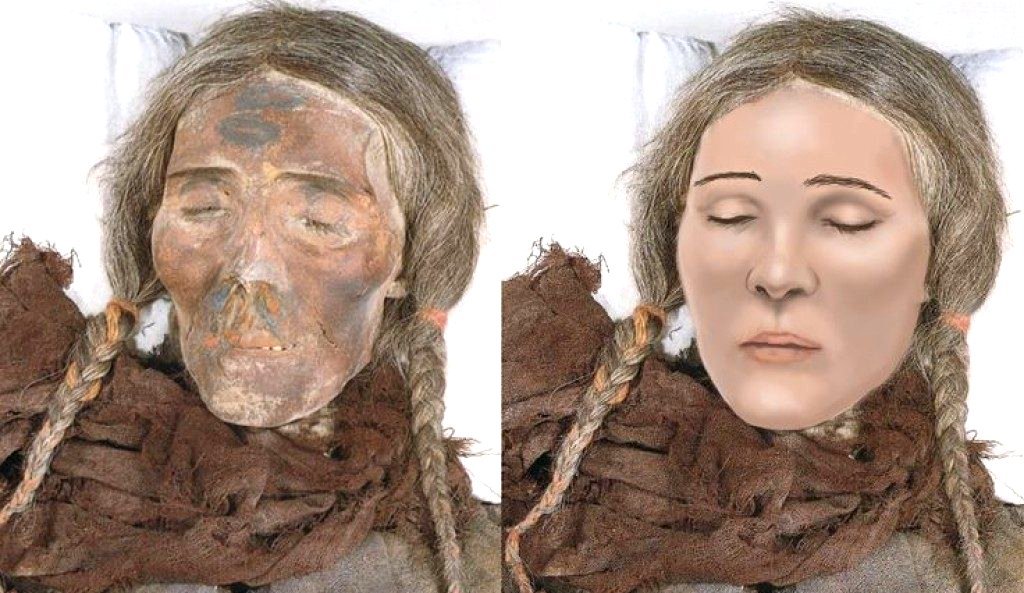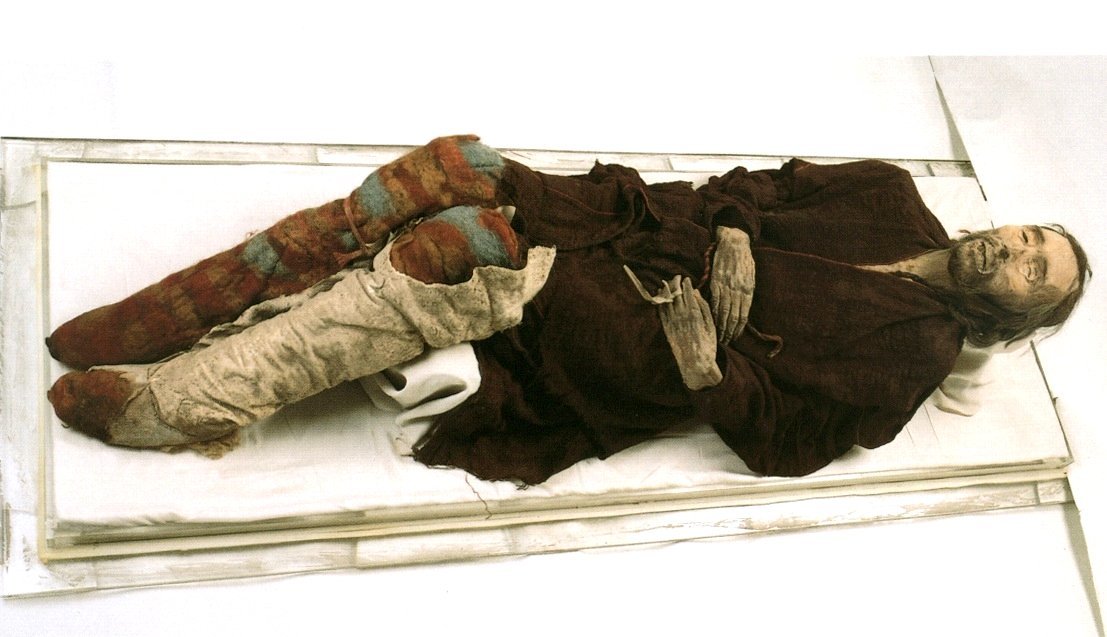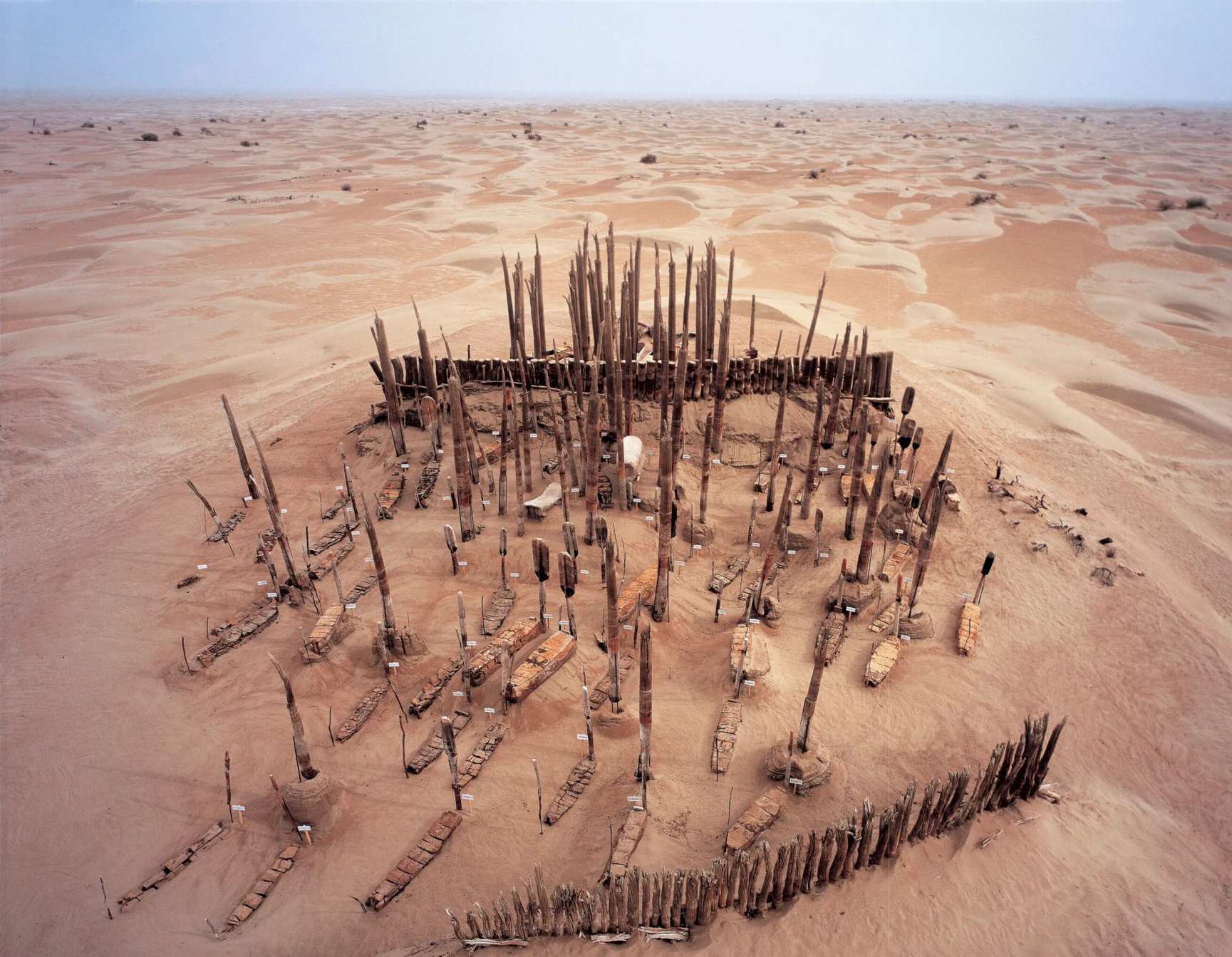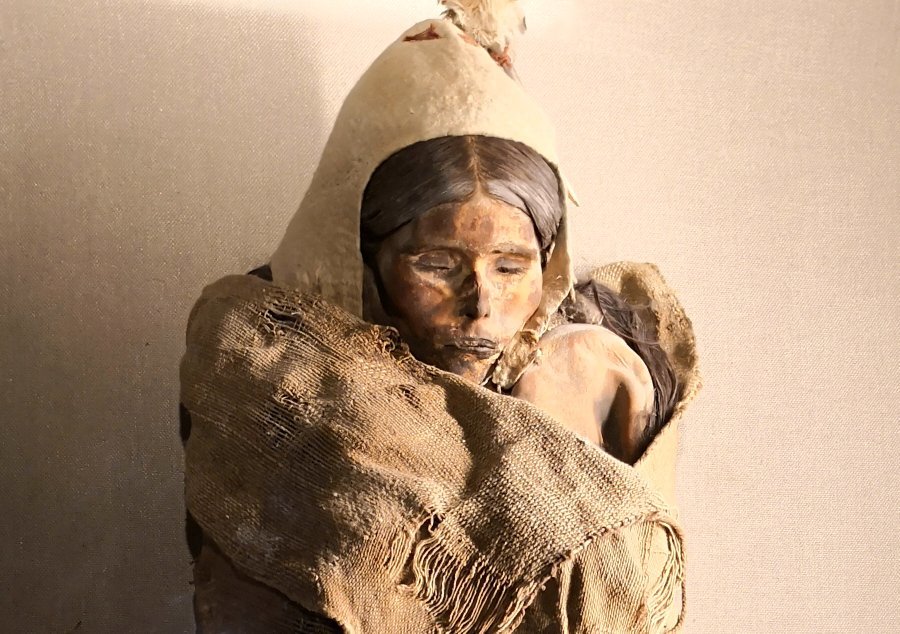The hidden depths of history have always astounded us, revealing unique cultures and civilizations that once existed. One such fascinating relic from the depths of time is the remarkable story of the Tocharian woman. Unearthed in the far-flung reaches of the Tarim Basin, her remains and the tales it carries provide a glimpse into a lost civilization and their extraordinary legacy.
Tocharian Female – a mysterious discovery

Nestled in the rugged terrain of the Xinjiang Uyghur Autonomous Region in northwest China, the Tarim Basin is an inhospitable expanse of arid land, whipped by fierce desert winds. Amidst this desolate landscape, archaeologists uncovered the remains of a woman belonging to the long-lost Tocharian civilization.
The Tocharian woman’s remains, discovered in the Xiaohe Cemetery, date back over 3,000 years. Thanks to the remarkably preserved nature of the burial site, her body was found wrapped in animal hides and adorned with elaborate jewelry and textiles. This woman, now colloquially referred to as the “Tocharian Female,” offers unique insights into the rich culture and traditions of the Tocharian people.
The other mummies found in the Tarim Basin date back up to 1800 BCE. Astonishingly, all the Trocharian mummies discovered in this region are remarkably well-preserved, with their skin, hair, and clothing still intact. Many of the mummies were buried with artifacts such as woven baskets, textiles, pottery, and sometimes even weapons.

The Trocharians were a Caucasian or Indo-European people who inhabited the Tarim Basin during the Bronze Age. The discovery of these mummies has significantly contributed to our understanding of the ancient population of this region.
Tocharian – a cultural tapestry
The Tocharians were an ancient Indo-European civilization believed to have migrated to the Tarim Basin from the west during the Bronze Age. Despite their physical isolation, the Tocharians developed a highly sophisticated civilization and were skilled in various fields, ranging from agriculture to arts and crafts.

Through in-depth analysis of the Tocharian Female’s remains and artifacts, experts have pieced together elements of the Tocharian way of life. Intricate textiles and decorations found in her grave shed light on their advanced weaving techniques and artistic prowess. Additionally, evidence of early dentistry and medical practices suggests that the Tocharians had a remarkably advanced understanding of healthcare for their time.
Austere beauty and cultural exchange
The Tocharian Female’s exceptional preservation provides a unique opportunity to study the physical features of the Tocharian people. Her Caucasian appearance and European-like facial features have ignited debates on the origin and migration patterns of ancient civilizations. The presence of European individuals in a region so far east from their homeland challenges conventional historical narratives and encourages a reevaluation of ancient migration routes.

Moreover, the discovery of manuscripts in the Tocharian language, an extinct branch of the Indo-European language family, has allowed linguists to gain insight into the linguistic landscape of the time. These manuscripts have unearthed an extraordinary cultural exchange between the Tocharians and their neighboring civilizations, further reiterating the vast knowledge and interconnectedness of ancient societies.
Although most of the historians propose that the Trocharians were a branch of the Indo-European-speaking community, there is evidence that suggests they may have been an ancient Caucasian people who migrated to the region perhaps from North America or Southern Russian.
Preserving and sharing heritage
The unexpected preservation of the Tocharian Female and the relics of the Tocharians allow us to glimpse into a long-forgotten civilization that flourished amidst the Turpan Basin. It is essential to appreciate the importance of archaeological exploration and the careful preservation of artifacts, as they provide us with the keys to unlock the secrets of our past. It is through continued research and study that we can preserve and share the rich heritage of the Tocharians, ensuring that their stories and accomplishments are not consigned to oblivion.




